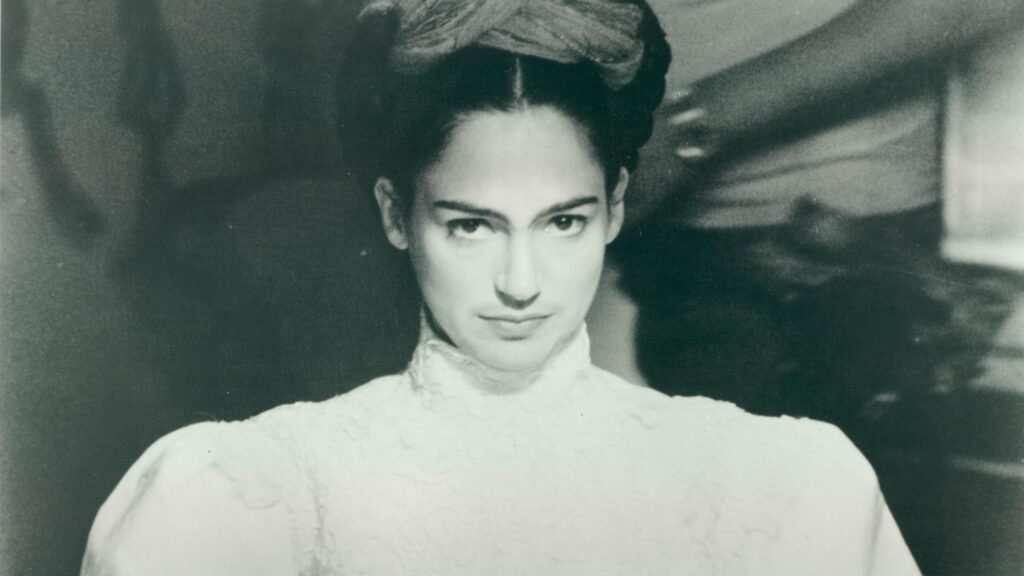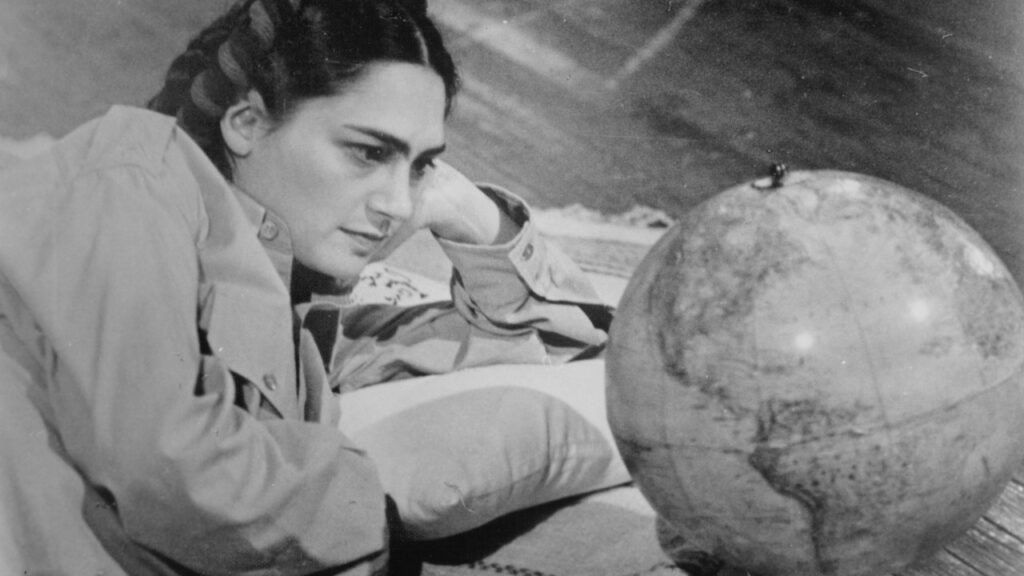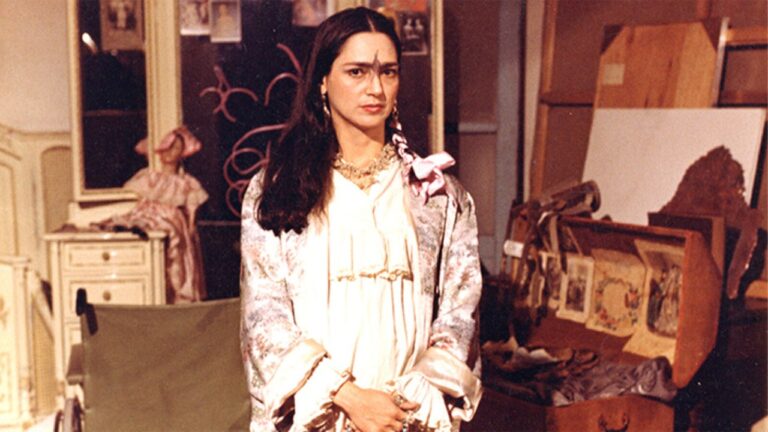‘Frida: Naturaleza Viva,’ which is globally known as ‘Frida Still Life‘ (1983), made by Paul Leduc, is not a conventional biopic, especially for viewers who are searching for a clear chronology of Frida Kahlo’s life, her creative process, or neatly dramatized milestones. None would be able to find them here. Instead, what we know is that Leduc offers something far rarer, that no one usually dares to approach. When it comes to Kahlo on her own terms, he gave his best to represent the same fractured beauty, painful honesty, and unflinching intimacy that define her art.
The film begins at the end, as we see Kahlo, played by Ofelia Medina, lies on her deathbed, surrounded by objects and memories that seem to float in the air like restless spirits. From there, her life unfolds in fragments: a childhood touched by polio, the bus accident that shattered her spine, her intense and turbulent marriage with Diego Rivera, her bouts of illness, and her stubborn vitality that outlasted every surgery and betrayal. Leduc does not present these episodes as a neat sequence. They appear as memories do, which is fluid, non-linear, one image bleeding into another.
Ofelia Medina and Paul Leduc Transform Frida’s Pain, Passion, and Resilience Into a Masterpiece

This structure is not merely an aesthetic indulgence. It mirrors the way Kahlo herself treated time in her paintings. In her self-portraits, the past and present coexist: a broken column stands in her spine, blood stains her dress, foliage sprouts around her body. Leduc translates this approach to cinema. Scenes shift suddenly from domestic quarrels to dreamlike hospital sequences. Conversations are brief, often cut short. Dialogue is sparse, replaced by music, silence, or the gaze of Medina’s eyes. The effect is haunting. The viewer does not “learn” about Kahlo; we inhabit her world, where joy and agony share the same frame.
Ofelia Medina’s performance is central to this achievement, and without leaning on caricature or exaggeration, she captures Kahlo’s wit, her sensuality, and the defiance with which she confronted both her body’s fragility and her husband’s infidelities. Medina reportedly immersed herself deeply in Kahlo’s life, and it shows. Her Frida is neither saint nor victim; she is fiercely alive, smoking, laughing, suffering, and always returning to the canvas as a form of survival. Medina carries the film with a physical presence that evokes Kahlo’s resilience: even when lying in bed, she commands the screen.
Leduc’s visual style resists the temptation to recreate Kahlo’s paintings literally, as later films would do. Instead, he constructs a visual language that feels like an extension of her art. Long, static shots resemble tableaux, with sudden bursts of color through her palette, mere shadows and light carve her body as if she were both subject and canvas. This indirect approach is more effective than any direct imitation. Rather than turning Kahlo into an object of spectacle, the film allows her interior world to shape the cinematic space.
But instead of just focusing on the cinematic visuals, he made sure that music also plays a vital role. Traditional Mexican songs, revolutionary anthems, and moments of silence all punctuate the narrative, as they situate Kahlo within her cultural and political milieu while also heightening the film’s emotional resonance. The soundtrack does not underline or explain; it immerses. A simple melody can transform a hospital ward into a place of ritual, or a domestic gathering into a memory tinged with loss.
Art, Humanity, and the Woman Within

The relationship between Kahlo and Rivera, often sensationalized in popular accounts, is treated here with nuance. Their love, betrayals, and reconciliations are not dramatized as grand confrontations but presented as recurring patterns, an endless cycle of dependence and passion. Rivera remains a constant presence, but it is Kahlo’s perspective that governs the film. In this way, Leduc subtly shifts the focus away from the larger-than-life muralist to the woman who, despite being overshadowed in her own time, has since become an icon.
What makes Frida: Naturaleza Viva endure is its refusal to flatten Kahlo into myth. The film does not reduce her to a symbol of suffering or a banner for political causes. It presents her as a human being who transformed pain into art without ever losing her sense of humor or her hunger for life. By the time the film circles back to her deathbed, the viewer feels less like they have witnessed a biography than like they have shared a consciousness.
Released in 1983, long before Kahlo’s global canonization, the film carries an intimacy that feels striking today. It was made by a Mexican director with Mexican actors, free from the need to translate Kahlo into an international commodity. Its concerns are local, cultural, and profoundly personal. That authenticity gives it a rawness that later interpretations, for all their polish, cannot match.
Frida: Naturaleza Viva is not an easy film; after all, its elliptical structure, sparse dialogue, and slow pacing demand patience. But for those willing to enter its beauty, they must know that it offers something far more rewarding than information, because it is an encounter with the texture of a life, lived fully and painfully, and rendered with cinematic care. In its fragments, one glimpses the wholeness of a woman who insisted on painting her own reality, and whose vision still resonates today.




